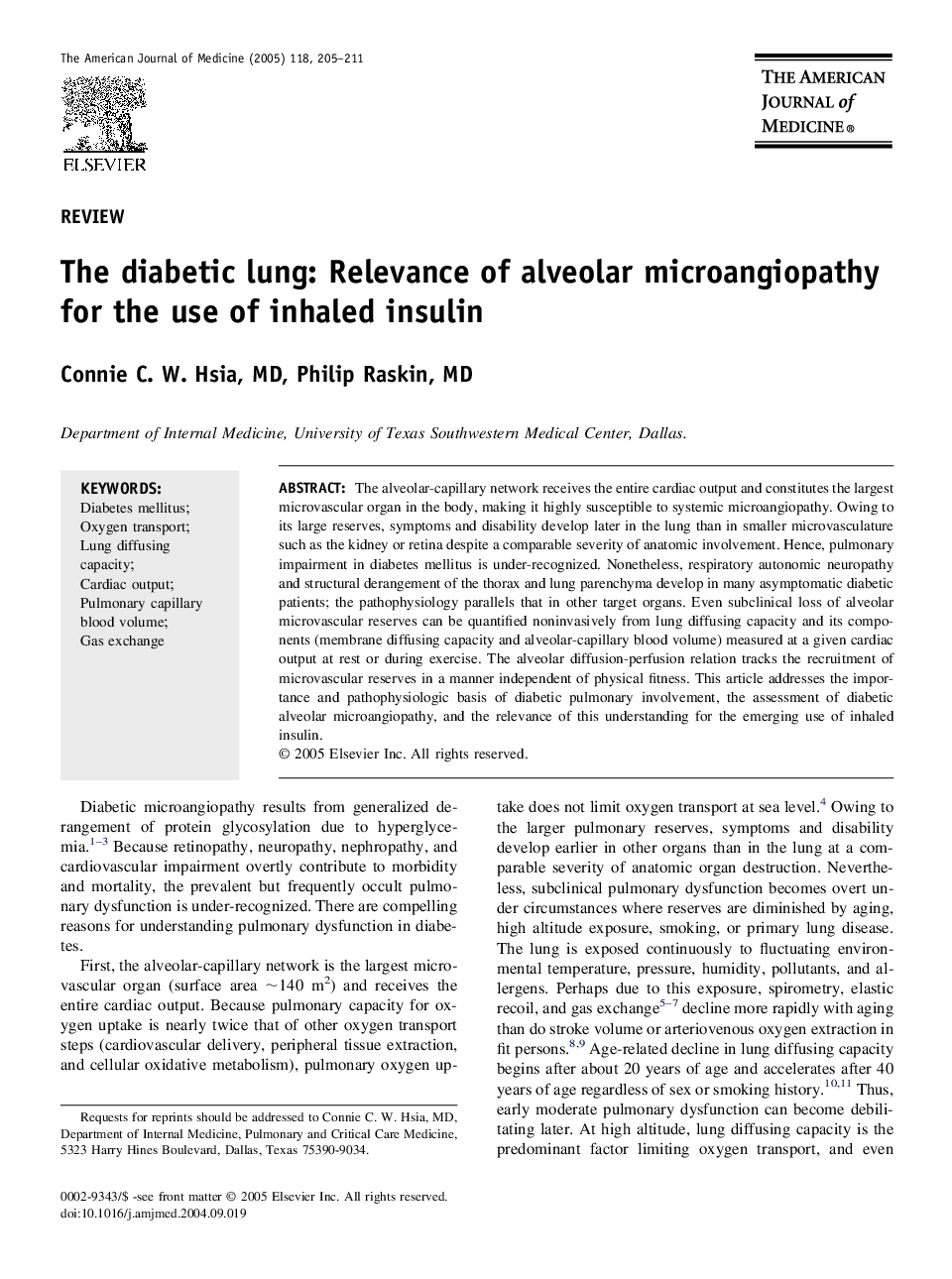| Article ID | Journal | Published Year | Pages | File Type |
|---|---|---|---|---|
| 9929531 | The American Journal of Medicine | 2005 | 7 Pages |
Abstract
The alveolar-capillary network receives the entire cardiac output and constitutes the largest microvascular organ in the body, making it highly susceptible to systemic microangiopathy. Owing to its large reserves, symptoms and disability develop later in the lung than in smaller microvasculature such as the kidney or retina despite a comparable severity of anatomic involvement. Hence, pulmonary impairment in diabetes mellitus is under-recognized. Nonetheless, respiratory autonomic neuropathy and structural derangement of the thorax and lung parenchyma develop in many asymptomatic diabetic patients; the pathophysiology parallels that in other target organs. Even subclinical loss of alveolar microvascular reserves can be quantified noninvasively from lung diffusing capacity and its components (membrane diffusing capacity and alveolar-capillary blood volume) measured at a given cardiac output at rest or during exercise. The alveolar diffusion-perfusion relation tracks the recruitment of microvascular reserves in a manner independent of physical fitness. This article addresses the importance and pathophysiologic basis of diabetic pulmonary involvement, the assessment of diabetic alveolar microangiopathy, and the relevance of this understanding for the emerging use of inhaled insulin.
Keywords
Related Topics
Health Sciences
Medicine and Dentistry
Medicine and Dentistry (General)
Authors
Connie C.W. MD, Philip MD,
